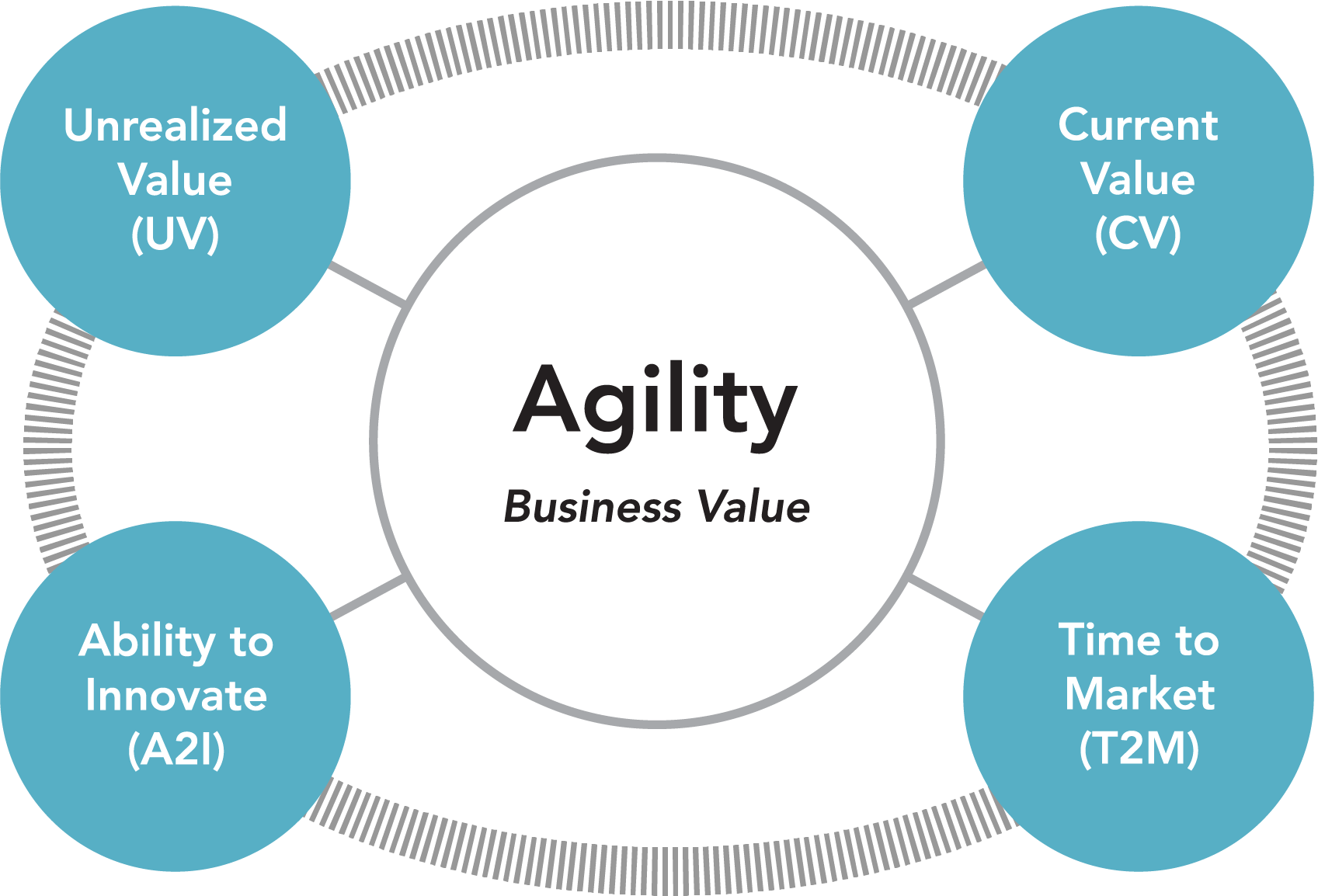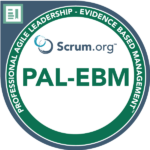In December 2022, I took part in the Professional Agile Leadership™ (PAL-E) training. After this, I completed the PAL I assessment. However, I still had questions about applying empiricism to gain business value. To find answers, I decided to enroll in the “Evidence-Based Management ™” course. This article will share my key takeaways from the course and the assessment.

The essence of Evidence-Based Management
According to the Scrum.org website, Evidence-Based Management helps organizations adapt. The business world is always changing, with customer needs shifting constantly. Agile organizations need information to adapt to these changes quickly. Yet, many organizations use traditional management techniques. They expect leaders to set long-term goals and measure progress using static metrics.
To solve this, Scrum.org developed the Evidence-Based Management™ (EBM) framework. This Agile approach guides leaders in improving customer outcomes, organizational capabilities, and business results. EBM concentrates on customer value and experiments to improve an organization’s performance consistently.
My learning goals
I signed up for this course to understand Evidence-Based Management better because I wanted to apply this knowledge to my work environment. My main goal was to understand how goals, measures, and their effects influence behavior, culture, and values in an organization. I also wanted to gain knowledge in helping organizations to adopt empiricism as a leadership style. It uses experiments to guide them towards their objectives.
Understanding the interplay between goals and trust was another objective. This understanding would foster transparency and value delivery. Lastly, I wanted to use Evidence-Based Management and its Key Value Areas. This would help me focus on enhancing market value and operational capabilities.
Course experience
On May 30th, 2023, I took part in a course led by trainers Simon Flossman and Evelien Roos. This course was organized by Xebia and was intensive yet enlightening. During the class, we explored various insightful topics that shed light on Evidence-Based Management. These were the key topics:
- Relationship between Goals, Measures, and Behaviors
- We examined the interconnection between these three components and how they influence each other in driving organizational performance. Goals provide direction, measures track progress, and behaviors align actions towards achieving desired outcomes.
- Three Types of Goals in Evidence-Based Management and their Categories
- We delved into the three types of goals in evidence-based management: activity goals, output goals, and outcome goals. Each category serves a distinct purpose in guiding decision-making and measuring success. Activity goals focus on the actions taken, output goals track the tangible deliverables, and outcome goals assess the impact and value delivered to customers or users.
- The Key Value Areas in Evidence-Based Management
- We discussed the key value areas that underpin evidence-based management practices. These areas encompass Current Value, Unrealized Value, Time to Market, and Ability to Innovate. By focusing on these areas, organizations can prioritize value creation, respond to market dynamics, and foster an environment conducive to innovation.
- The Application of Empiricism in Evidence-Based Management
- We explored the application of empiricism, an essential principle of evidence-based management. Empiricism emphasizes making decisions based on observations, experimentation, and real-world data. By embracing an empirical mindset, organizations can continuously learn, adapt, and make informed decisions, minimizing risks and maximizing value.
Preparing for the assessment
In gearing up for the PAL-EBM assessment, our trainer shared some valuable preparatory tips:
- ✅ reading the EBM Guide (study the example and the KVMs);
- ✅ taking the EBM Open;
- ✅ reviewing the PAL-E Reference Guide (especially the Takeaways) and;
- ✅ reviewing the notes from the training.
Following these tips, I took the assessment in Porto on a sunny Sunday. I passed the test with a score of 91.3%. The time limit was 60 minutes, and I had plenty of time to revisit questions.
Reflection on the training
The training took place at the Xebia Academy. It was a well-structured, engaging, and insightful environment. The trainers, Simon and Evelien, were experts in their field and made the learning process enjoyable and effortless. I believe that the knowledge I gained from this course will be hugely beneficial to my organization.
Moreover, the fact that Xebia’s courses are eligible for the Dutch government-funded personal education grant (STAP) made it a very attractive choice for me.
Moving forward with Evidence-Based Management
Having recently moved into a management role, I believe in the importance of Evidence-Based Management (EBM). I think it can help organizations make informed decisions and drive innovation. By applying EBM principles, I hope to create a workplace that values data, encourages learning, and fosters a culture of improvement and experimentation.

